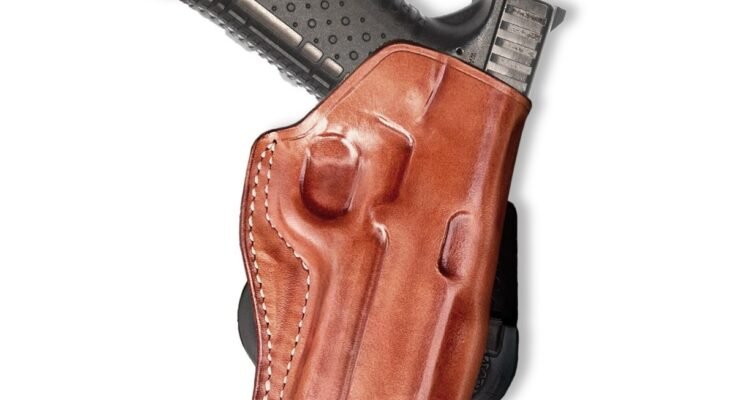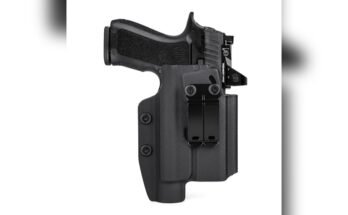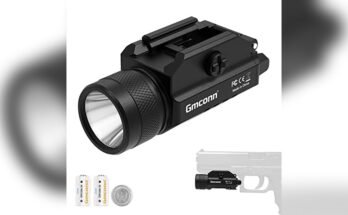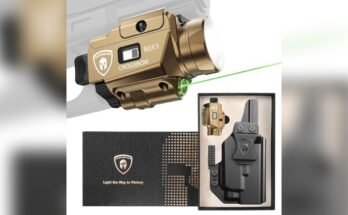I’ve spent years training new carriers, testing gear, and running daily carry drills. Here’s the simple truth: your holster should be snug enough to hold the gun in place during life’s bumps, yet smooth enough to allow a clean, safe draw. If you have ever asked, how tight should a holster fit?, you’re already thinking like a responsible carrier. In this guide, I’ll share what works, what fails, and how to dial in your fit for comfort, concealment, and safety—without guesswork.

What “Right Fit” Really Means
The right fit balances retention and access. Your holster must grip the gun so it stays put when you move, bend, and run. But it should also let you draw without a tug-of-war. Think of it like a seatbelt. Secure when you need it. Smooth when you release it.
Here is the core standard I use:
- The gun should not fall out when turned upside down and lightly shaken.
- You should feel a light click or friction at the trigger guard or ejection port on many kydex holsters.
- The draw should be firm but not jerky. If you tip forward, the gun should not slide free.
- Reholstering should not force the muzzle off target or require two hands on a rigid holster.
Aim for consistent, repeatable resistance. If your draw slows because you fight the holster, it is too tight. If the gun shifts in the holster or rattles, it is too loose.

Understanding Retention Levels
There are two kinds of retention you’ll encounter:
- Passive retention. Friction fit or a molded click. Most concealed carry holsters use this.
- Active retention. A strap, hood, or button you release with your thumb. Often used in duty rigs.
For daily concealed carry, passive retention set well is enough for most shooters. For high movement, duty, or open carry, active retention adds security. Match the retention to your risk, your role, and your environment.

The “Shake, Jump, Draw” Test
Use a simple test to confirm fit. Clear your gun first and double-check that it is unloaded.
Do this sequence:
- Shake. With the gun holstered, turn it upside down over a bed. Give a light shake. The gun should stay.
- Jump. Put on the holster. Do five jumping jacks and a few quick steps. No shift or creeping out.
- Draw. Perform five slow, safe draws. Then five at speed. Draw should be smooth. You should not rip your belt off your waist or wrench your shoulder.
If you fail any step, adjust retention or try a different holster/belt combo.
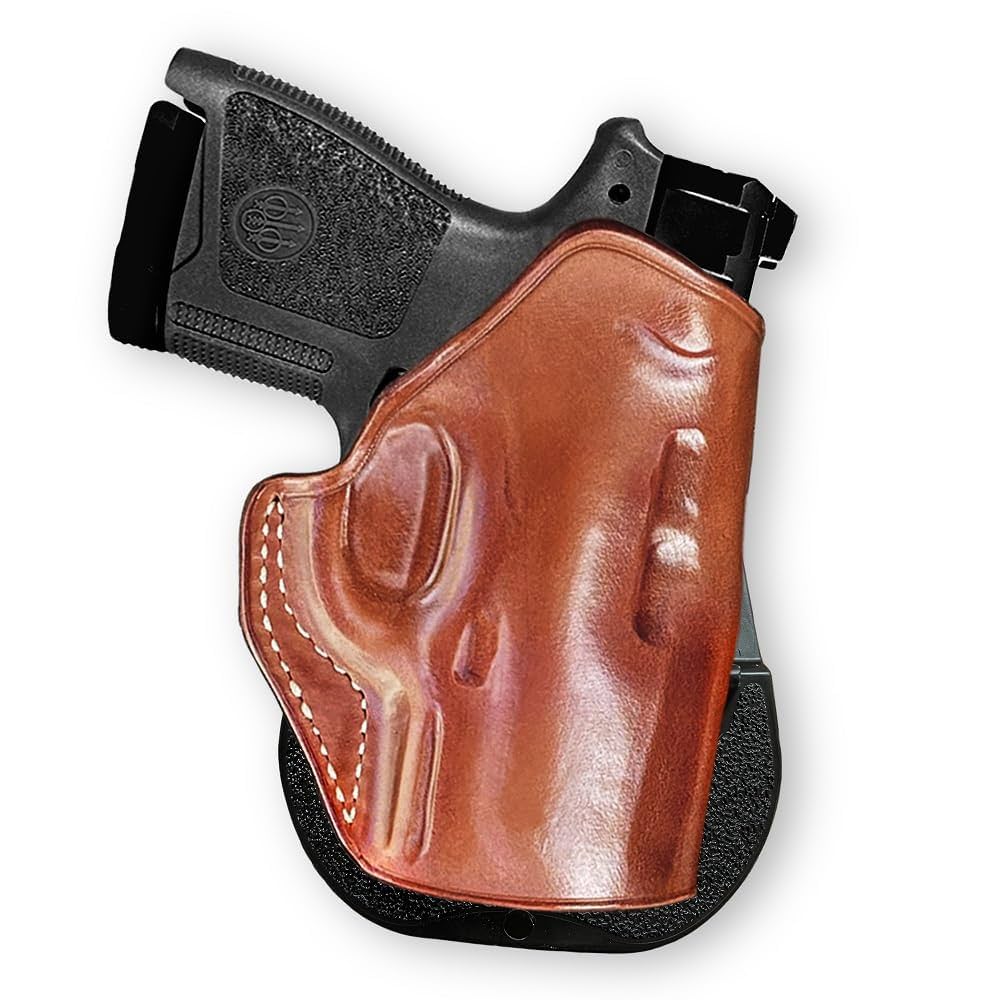
Materials And How They Change Fit
Different holsters hold the gun in different ways:
- Kydex. Crisp click at the trigger guard or ejection port. Retention screws allow fine tuning. Shape stays stable in heat and cold.
- Leather. Starts snug. Breaks in over a week or two. Needs care so it does not soften too much.
- Hybrid. Kydex shell on a leather or synthetic backer. Good balance of comfort and consistent lock.
Also consider sweat guards, wedges, and wings. These improve concealment and help keep your draw angle the same every time. A quality, stiff belt is a must. A weak belt makes any holster feel loose.

Signs Your Holster Is Too Tight Or Too Loose
Watch for these red flags.
Too tight:
- You must yank with force.
- The gun drags or scrapes hard on the draw.
- The holster lifts your belt or pants before the gun breaks free.
- Reholstering takes both hands or collapses the mouth on soft rigs.
Too loose:
- The gun shifts, rattles, or tilts.
- You can push it out with a finger from the muzzle end.
- It falls during movement or bending.
- No friction point or click is felt in kydex.
Adjust or replace if you see these signs.
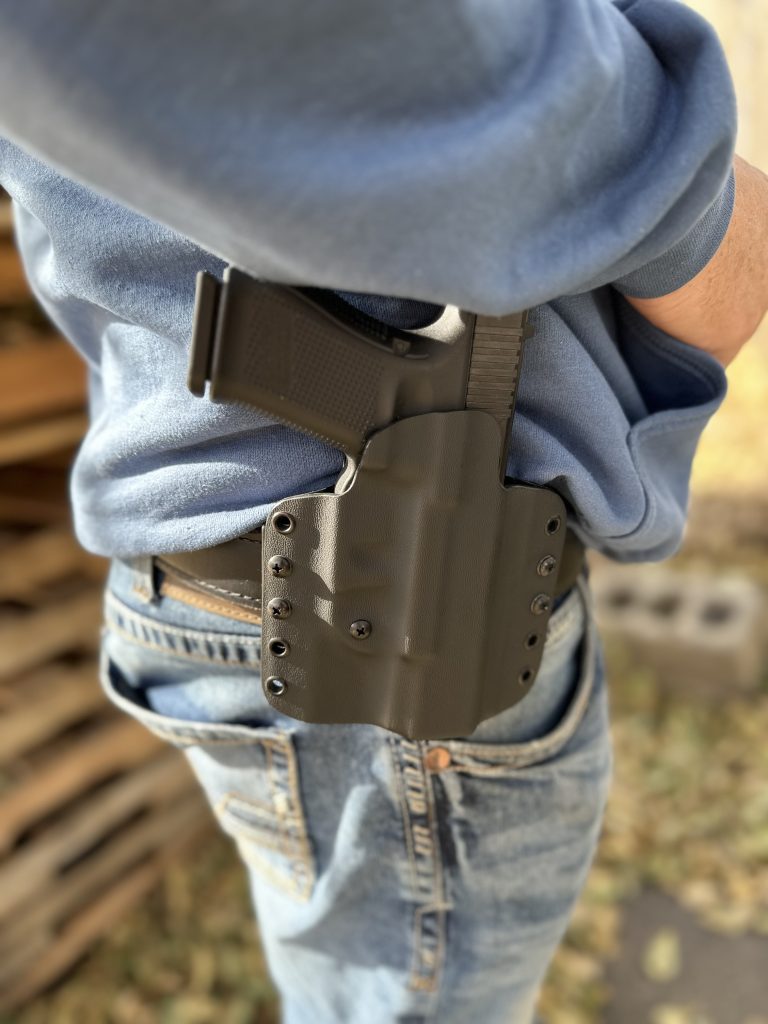
How To Adjust Retention By Holster Type
Kydex:
- Tighten the retention screws one quarter turn at a time.
- Test after each change.
- Add or remove rubber spacers if included to fine tune pressure.
Leather:
- If new and stiff, wear it around the house for a few hours.
- If too tight, use a plastic bag around the unloaded gun and holster overnight.
- Do not soak in water. Avoid heavy oils that soften structure.
- If it stays loose, it may be worn out and unsafe.
Hybrid:
- Use the shell screws for fit.
- Adjust clips for ride height and cant to improve draw angle.
Break-In: How Long Should It Take?
Kydex needs little break-in. You set it with screws and go.
Leather needs time. Expect 3 to 7 days of regular wear to relax and conform. Do short dry-fire sessions with safe, unloaded draws. The fit should settle into that “just right” feel.
If a leather holster stays too tight after a week, use the plastic bag trick. If it loosens fast after a month, it may be a quality issue.
Carry Positions And How Fit Feels Different
Position changes the feel of tightness because of angle and body pressure:
- Appendix (AIWB). Needs a bit more retention due to bending and seated pressure. Use a wing or wedge to control tilt.
- Strong-side (3–4 o’clock). Neutral tension is fine. Ensure the mouth stays open for safe reholster.
- Small of back. Use with care; falls can be risky. Keep retention firm and draw clear of clothing.
- Pocket holsters. Must stay in the pocket during draw. Test by drawing quickly; the holster should not come out with the gun.
- Ankle holsters. Need secure wrap and firm retention. Test with steps and jogs.
Always test while seated, standing, and getting into a car. Clothing can change friction and feel.
Safety First: Draws, Reholstering, And Trigger Coverage
Your holster must fully cover the trigger guard. This is non-negotiable. The fit should keep the gun stable so nothing presses the trigger while you move or reholster.
Safe habits:
- Keep your finger off the trigger through the draw and reholster.
- Reholster slow. Speed belongs to the draw, not the return.
- Watch clothing, cords, and shirt tails near the holster mouth.
- If the holster collapses, replace it. Do not force the gun in.
These steps matter more than brand or price.
Common Mistakes I See And How To Avoid Them
From my own classes and range days, here are repeat offenders:
- Using a fashion belt. Use a gun belt. It changes everything.
- Cranking screws too tight. This causes jerky draws. Make small changes and test.
- Ignoring ride height. A lower ride can feel tighter due to body pressure. Adjust cant and height first.
- Skipping practice. A perfect fit still needs reps to become smooth and safe.
- Letting leather get soggy. Sweat and rain can soften it. Air dry and condition lightly as needed.
Maintenance For Long-Term Fit
A little care keeps your fit steady:
- Check screws monthly. Add a dab of thread locker if they back out.
- Wipe out dust and lint. Debris can change friction.
- Inspect clips and loops. Replace worn hardware.
- Store leather holsters dry and cool. Do not over-condition.
- Re-test after any drop, bump, or gear change.
Your holster is life-safety equipment. Treat it like one.
Quick Buyer’s Checklist For Proper Fit
Before you buy, confirm:
- Exact model fit. Holsters are model-specific. A close match is not enough.
- Adjustable retention. At least one screw or insert is ideal.
- Trigger guard coverage. Full, rigid coverage only.
- Solid belt attachment. Clips, loops, or wings that match your belt width.
- Body comfort. No sharp edges. Test sitting and standing.
- Proven maker. Look for clear specs, return policy, and support.
If you can test in person, do the shake, jump, draw before you buy.
Frequently Asked Questions Of How Tight Should A Holster Fit?
Should I Hear A Click With A Kydex Holster?
You often will. That click signals contact at a key lock point. No click does not always mean bad fit, but you should feel steady friction and pass the shake test.
How Tight Is Too Tight For Concealed Carry?
If the holster lifts your belt or you need two hands to draw, it is too tight. You want firm, smooth resistance and a clean release.
Do Leather Holsters Loosen Over Time?
Yes. Leather breaks in and can soften. Maintain it and re-test often. If it gets spongy or collapses, replace it.
Will A Better Belt Fix A Loose Holster?
A good gun belt improves stability and draw angle. It will not fix a poor holster, but it can solve many “loose feel” issues.
Is Active Retention Needed For Concealed Carry?
Not for most people. Quality passive retention is enough for daily carry. Choose active retention for open carry or high activity roles.
How Often Should I Check Retention Screws?
Check monthly, or after hard use. Add a small amount of thread locker if they loosen often.
Can I Heat A Kydex Holster To Adjust Fit?
Small, careful heat adjustments are possible, but risky. Try screw and spacer changes first. If needed, contact the maker.
Wrap-Up And Next Steps
Set your holster so it holds steady when life moves, yet lets you draw clean when it counts. Use the shake, jump, draw test. Tune ride height and cant before cranking down retention. Pair it with a real gun belt. Practice slow, safe reps until the motion feels natural.
Now, take five minutes to test your setup today. Make one small improvement. Your comfort and safety will jump. Want more tips and gear tests? Subscribe, share your setup in the comments, and tell me what you want reviewed next.
